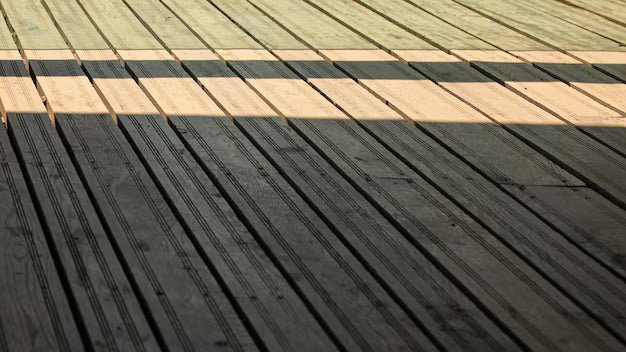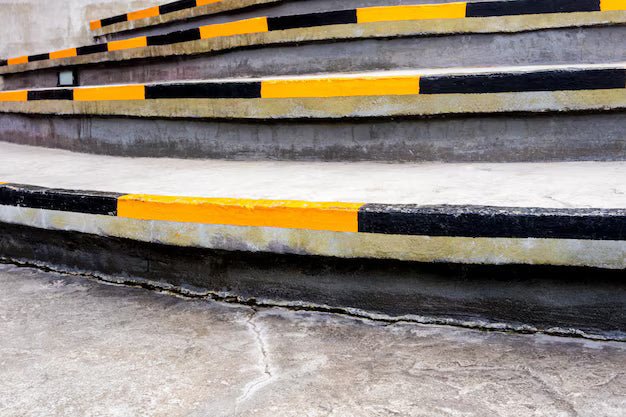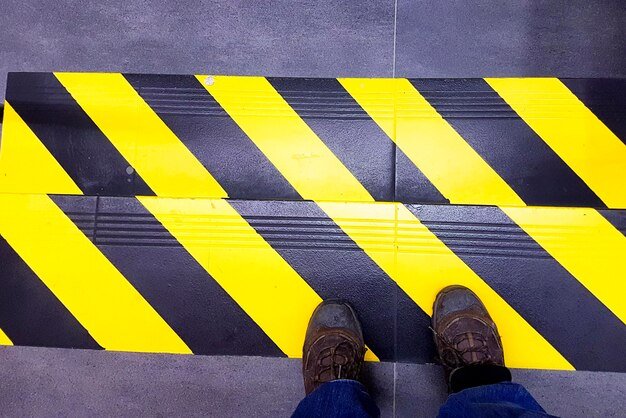By late October, garden decks take on a different feel. The air is damp, daylight slips away faster, and the scent of rain hangs around longer. These shifts can turn once-secure surfaces into hazards, especially if old decking grip strips have started to wear down.
When strips crack, peel, or go missing completely, slip risks rise quickly, especially just before November’s heavier rains set in. Even a slight wobble in the surface can catch someone off guard. Swapping out the old grips now, before the worst of the wet weather, can protect both the deck and those walking across it. The earlier you catch the signs of damage, the easier it is to keep things steady into winter.
Signs Your Decking Strips Need Replacing
Damaged decking grip strips rarely fail all at once. Usually, it starts with small changes, some you can see, others you feel underfoot.
• Cracked, peeling, or curling edges often show up after months of rain and cold
• Surfaces that once felt gritty now feel smooth, making your step less sure
• Strips may loosen in wet weather or let water sit underneath, soaking the wood
If the grip feels different under your shoes than it did in earlier months, it may not be your footing, it’s likely the strip itself failing to do its job. Water pooling near the strip or lifting at the corners is a strong sign it’s time to replace it. These problems don’t always shout, but they grow louder with every rainy day.
Why Timing Matters Before the November Rains
October walks a fine line. It’s cool enough to notice the chill but still workable for outdoor repairs. Once November arrives, things get wetter, darker, and far less predictable.
• Daylight hours shrink quickly after the clocks change, limiting safe work windows
• Slippery strips become harder to spot and replace once rain settles into a daily routine
• Damaged grips let water slip underneath, making slow damage to the wood more likely
Putting off repairs until the deep wet sets in often leads to extra problems. Early fixes stop ongoing moisture from finding entire paths through small tears or missing patches. Time is limited once the cold soaks in, and working in heavy rain comes with extra risks. A bit of effort now makes things safer and avoids surprises later in the season.
Common Causes of Damage in Grip Strips
Grip strips take on a lot, even during seasons that seem dry. Over time, small impacts and steady wear add up.
• Weather breakdown from sun, frost, and constant damp takes a toll
• Heavy use on narrow walkways or steps wears down texture faster
• Old adhesive or poor install leaves strips weak long before they’re seen as unsafe
Each year brings a fresh round of foot traffic, dirt, grit, and rain. Good materials wear differently based on how they’re used. A grip strip near the back door may look fine but be thinning out under daily pressure. Anything installed years ago could have glue that stopped holding months back. Sometimes, the first clue is how fast a strip worsens once the wet returns.
Slips Away’s decking grip strips are constructed from heavy-duty glass reinforced plastic, featuring a high-traction resin grit finish for increased grip in wet weather. Available in a range of widths, colours, and finishes, these strips can be cut to fit any deck or outdoor step, making them suitable for both domestic and commercial environments. Installation is straightforward with supplied fixing kits, ensuring secure attachment just ahead of the rainy season.
Choosing the Right Replacement Strips
Not all grip strips are the same. Get them right, and you’ll hardly notice them, until you don't have one where it's needed most.
• Match the new strip to the old one’s width and material, or choose something more durable if a change makes sense
• Use colour and contrast to make outdoor steps or shaded corners easier to see, even during low light
• Think about water exposure, extra traction styles may suit areas that never fully dry
Replacement is more than just sticking something on. If you’re changing multiple strips, it’s worth using the chance to improve. Colour choice often gets overlooked, but when it’s dark and wet, easily visible strips do more than prevent slips. They help show people where the next step even is.
New strips can deliver both safer footing and better visibility if you pick a high-contrast colour for dim or rain-filled days. This makes each step more obvious, even from a distance. It's especially helpful in corners or on lower garden paths where lighting is weak. When updating several strips, you also get the opportunity to review the general condition of the whole deck, checking for other concerns such as pooled water or signs of wood fatigue. Taking this moment to upgrade ensures you are set for the season ahead and ready for unexpected weather.
How to Know It's Time to Call in a Professional
A single loose strip might feel like a small job, but when damage spreads wide or deeper issues show up, it’s worth pausing for a closer look.
• Several loose or missing strips across multiple areas mean a bigger repair is likely
• If lifting strips reveal rotting or softened timber, the deck may need more than surface work
• Anyone concerned about balance, accessibility, or safety during installation should not handle it alone
It’s easy to miss how fast damp spreads when there’s slow damage underneath. If the deck feels soft, spongy, or less steady in one spot, replacing the grip might only solve part of the problem. A good surface starts with a sound base, and once boards shift or hold water, more care is needed to address what’s underneath.
Getting extra help may be necessary if you find more than a surface problem. In some cases, extensive water exposure causes the decking boards to bend or shift, suggesting rot may be present below. A professional can assess these issues quickly, ensuring that the repairs last and that the deck remains safe once the strip is replaced. It’s better to address hidden troubles now, rather than deal with bigger and costlier fixes in the wettest months.
Keep Your Surfaces Safer All Season
The slippery season never gives much warning. Decks often feel fine one weekend, then feel unsteady the next after a few wet days roll through. It's the kind of change that creeps up, not crashes in. That’s why a check, a close look, and a strip swap now can carry you through the months ahead.
Whether it’s the path to the bins, the landing at the back gate, or the small stairs by the shed, it only takes one slip to remind you how important good grip really is. Do it once, do it right, and autumn walks feel steady again, even when the rain won’t stop.
Even after replacing grip strips, regular checks help maintain safety all season long. A quick walk around the deck after each downpour, or every couple of weeks, lets you catch loosening or wear before it becomes serious. Make it a habit as autumn progresses, this way, your deck stays ready for company, and you avoid the headaches that come from unattended minor damage turning major just as winter arrives.
When your deck is starting to feel less safe or you've spotted signs of wear across key walking areas, now is a good time to act. Before the heavier rain sets in, replacing worn or loose grips helps prevent more serious issues with both traction and underlying damage. At Slips Away, we offer a selection of decking grip strips to help restore stability where it's needed most. We're here to help you stay steady through every season. Give us a call if you'd like support choosing the right option for your space.














